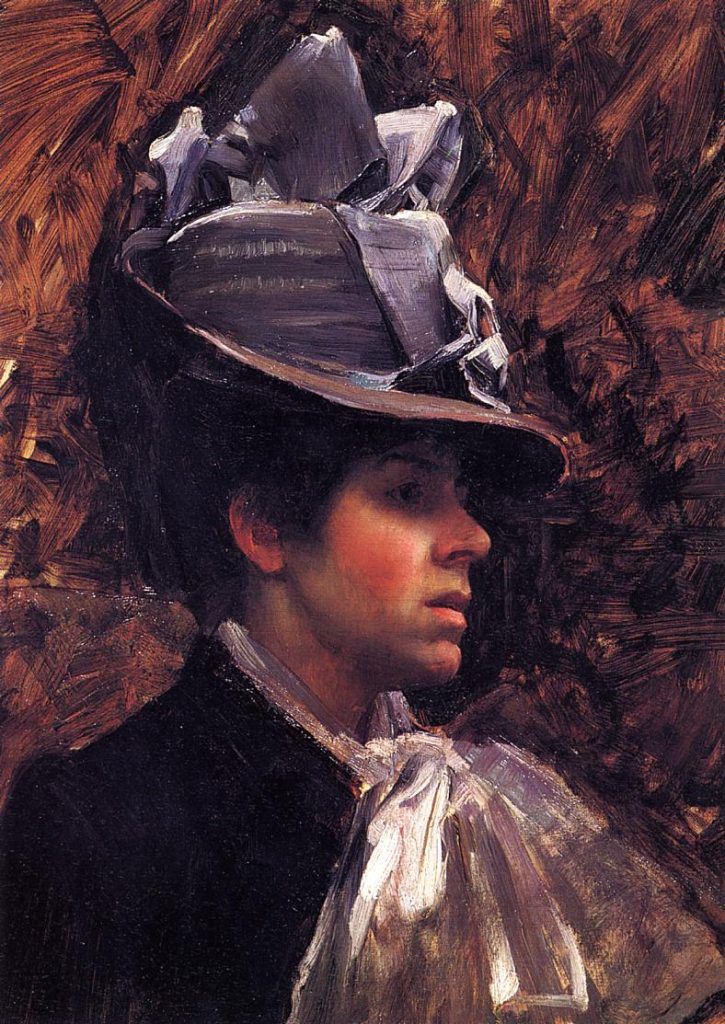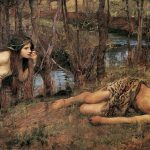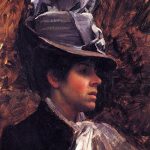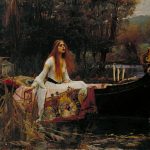
When we talk about John William Waterhouse, images of ethereal women from mythology and literature often come to mind. His paintings capture a romanticized world filled with beauty, mystery, and an undeniable touch of melancholy. But behind many of these mesmerizing works was a significant yet often overlooked influence: his wife, Esther Kenworthy. Esther wasn’t just his spouse but also his muse, a pivotal figure in his life and art.
The Early Years of John William Waterhouse
Born in Rome in 1849 to British painters William and Isabella Waterhouse, John William Waterhouse grew up in an environment steeped in artistic tradition. His family returned to England when he was young, and it wasn’t long before Waterhouse began to follow in his parents’ footsteps. Enrolling at the Royal Academy of Art in 1870, he soon began to establish himself as a talented artist with a penchant for historical and classical themes.
Waterhouse’s early works were inspired by the Neo-Classical and Pre-Raphaelite movements. These styles emphasized detailed and vivid representations, often drawing on themes from ancient mythology, medieval history, and classical literature. His skillful use of color and light, combined with his ability to convey deep emotion through his subjects, set the stage for a remarkable career.
Meeting Esther Kenworthy
Esther Kenworthy entered Waterhouse’s life at a crucial time. Born in 1857 in Manchester, she was the daughter of James Lee Kenworthy, an artist specializing in still life and landscapes. Esther inherited her father’s artistic inclinations, and she exhibited her works at the Royal Academy, showcasing her talent and passion for painting.
Their paths crossed in the late 1870s or early 1880s, a period when Waterhouse’s career was gaining momentum. Their shared love for art undoubtedly played a role in their connection. Esther’s understanding of the artistic process and her own experiences as a painter provided a unique foundation for their relationship.
Esther: More Than a Muse
To call Esther merely a muse might be an understatement. While it’s true that she inspired many of Waterhouse’s works, her influence extended beyond just being a subject for his paintings. She was a partner, a confidante, and a collaborator. Their marriage in 1883 marked the beginning of a deep and enduring partnership.
Esther’s influence on Waterhouse’s work can be seen in the recurring themes of femininity, beauty, and introspection. Many of Waterhouse’s female subjects are imbued with a sense of inner life and complexity that suggests a deep understanding and appreciation of the feminine psyche. It’s plausible that Esther, with her artistic background and personal insights, contributed to this nuanced portrayal.
The Iconic Works
Waterhouse’s paintings are renowned for their depiction of women from mythology and literature. From the enchanting “The Lady of Shalott” to the tragic “Ophelia,” his works resonate with viewers on a profound level. While Esther may not have directly posed for all these paintings, her presence in Waterhouse’s life undoubtedly influenced his portrayal of these iconic characters.
“The Lady of Shalott” is one of Waterhouse’s most celebrated works, depicting the doomed heroine from Alfred Lord Tennyson’s poem. The painting captures the moment she sets out on her final journey, a mix of determination and sorrow etched on her face. The attention to detail, from the intricate tapestry she weaves to the lush background, showcases Waterhouse’s mastery. But it’s the emotional depth of the Lady that stands out, perhaps reflecting Waterhouse’s intimate understanding of the women in his life, including Esther.
In “Ophelia,” Waterhouse portrays the tragic character from Shakespeare’s “Hamlet” in a moment of melancholy and contemplation. The painting’s mood is both haunting and beautiful, capturing Ophelia’s inner turmoil and fragility. Again, the sensitivity with which Waterhouse depicts his subject suggests a profound empathy, possibly influenced by his relationship with Esther.
The Personal Touch
Waterhouse’s paintings often feel personal, as if each subject carries a piece of his own experience and emotion. This personal touch can be attributed to his close relationship with Esther. Their partnership likely provided him with a deeper understanding of human emotions, allowing him to infuse his works with authenticity and empathy.
It’s worth noting that Waterhouse’s depictions of women were not merely idealized versions of beauty. They were complex, multifaceted characters who embodied strength, vulnerability, and resilience. This complexity might have been inspired by Esther herself, who was not only a talented artist but also a strong and independent woman in her own right.
The Later Years
As Waterhouse’s career progressed, so did his reputation as one of the leading artists of his time. His works continued to captivate audiences, and his exhibitions were met with critical acclaim. Throughout this period, Esther remained a constant presence in his life, providing support and inspiration.
In the later years of his career, Waterhouse’s health began to decline. Despite this, he continued to paint, driven by his passion for art. Esther’s role during this time was crucial, as she provided not only emotional support but also practical assistance. Her understanding of the artistic process and her own experiences as a painter allowed her to offer valuable insights and encouragement.
Legacy and Influence
John William Waterhouse’s legacy is undeniable. His works continue to be celebrated and admired, and his influence can be seen in the works of contemporary artists. But it’s important to recognize the role that Esther Kenworthy played in his life and art. Her presence and influence were instrumental in shaping some of his most iconic works.
In acknowledging Esther’s contribution, we gain a deeper understanding of Waterhouse’s art. His portrayals of women are not just beautiful images but are imbued with a sense of life and depth that reflects his relationship with Esther. She was more than a muse; she was a partner and a collaborator who helped shape his artistic vision.
Conclusion: A Love Beyond the Canvas
The story of John William Waterhouse and Esther Kenworthy is one of love, partnership, and mutual inspiration. Their relationship was a cornerstone of Waterhouse’s artistic journey, providing him with the emotional and intellectual support needed to create his masterpieces.
Waterhouse’s paintings, with their exquisite detail and emotional depth, continue to captivate audiences today. But behind these works is the story of a man and a woman whose shared passion for art created a legacy that transcends time.
So, the next time you find yourself lost in the world of Waterhouse’s ethereal women, take a moment to remember Esther Kenworthy. Her influence, though often overlooked, is woven into the fabric of Waterhouse’s art, adding a layer of richness and complexity that makes his work all the more compelling.
As we celebrate the beauty and emotion of Waterhouse’s paintings, let’s also celebrate the love and partnership that made them possible. For in the story of John William Waterhouse and Esther Kenworthy, we find a testament to the enduring power of art and love.




